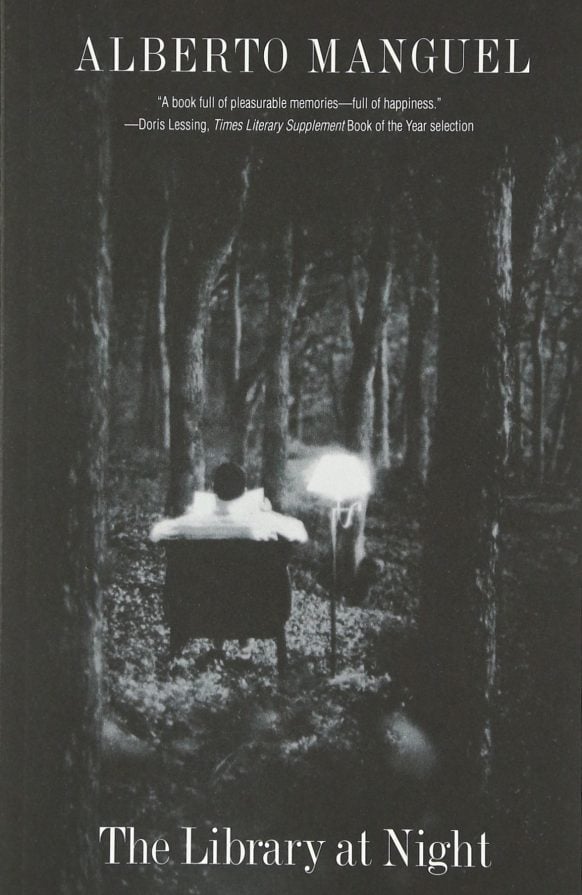The Library at Night by Alberto Manguel
Alberto Manguel’s The Library at Night, first published in 2006, is a collection of fifteen essay-like chapters, each celebrating a particular library-related theme and, in the process, teasing out dizzying depths of obscure, often literally hidden, historic details relating to particular libraries, many of which still exist while others remain in fragmentary clues and others are simply imagined (by Jorge Luis Borges in “The Library of Babel”, for example).
This is a book that members of SMSA, library lovers, book lovers, can lose themselves in.
Manguel tracks down buried libraries, lost libraries, famous modern libraries and dreamt libraries. He takes his readers to the ruined library at Efes in Turkey (the Library of Celsus) – commissioned only 100 years after the apostle Paul walked and preached in the streets of Ephesus; the towering, two-storey ruin still stands, a gorgeously intricate façade of empty arches. And to Michelangelo’s Laurentian Library in Florence, designed for the Medici family. To the donkey libraries, “Biblioburro”, of remote rural Colombia, whose itinerant book collections are carried on donkey-back to waiting readers.
Manguel follows and uncovers the detailed traces of library histories across countries, eras and religions; a fragment of stone from ancient Athens inscribed with library opening hours; a librarian-bookseller of Kabul, veteran of Communist and Taliban rule, bombings and book-burnings; Chinese archives; Greek and Roman libraries; monastic libraries and concentration camp libraries, all the way to electronic virtual libraries and the present-day “de-accession” of library books.
Chapter headings such as “The Library as Myth”, “The Library as Mind”, “The Library as Oblivion”, offer intriguing clues to the depth of detail the chapters contain as they delve into histories, architecture, design, cataloguing peculiarities, origins and outcomes; the stories and the wildly diverse spectrum of human characters and their obsessions, sometimes famous, sometimes obscure, often legendary, are threaded through with Manguel’s wandering reflections on books and reading in his own library.
Originally from Buenos Aires, Alberto Manguel is a citizen of the world and his publications reflect his wide-ranging interests and knowledge, particularly focused on books and art, The History of Reading and Reading Pictures among them.
Reviewed by Judith Elen
SMSA Member
Find this book in SMSA Library

